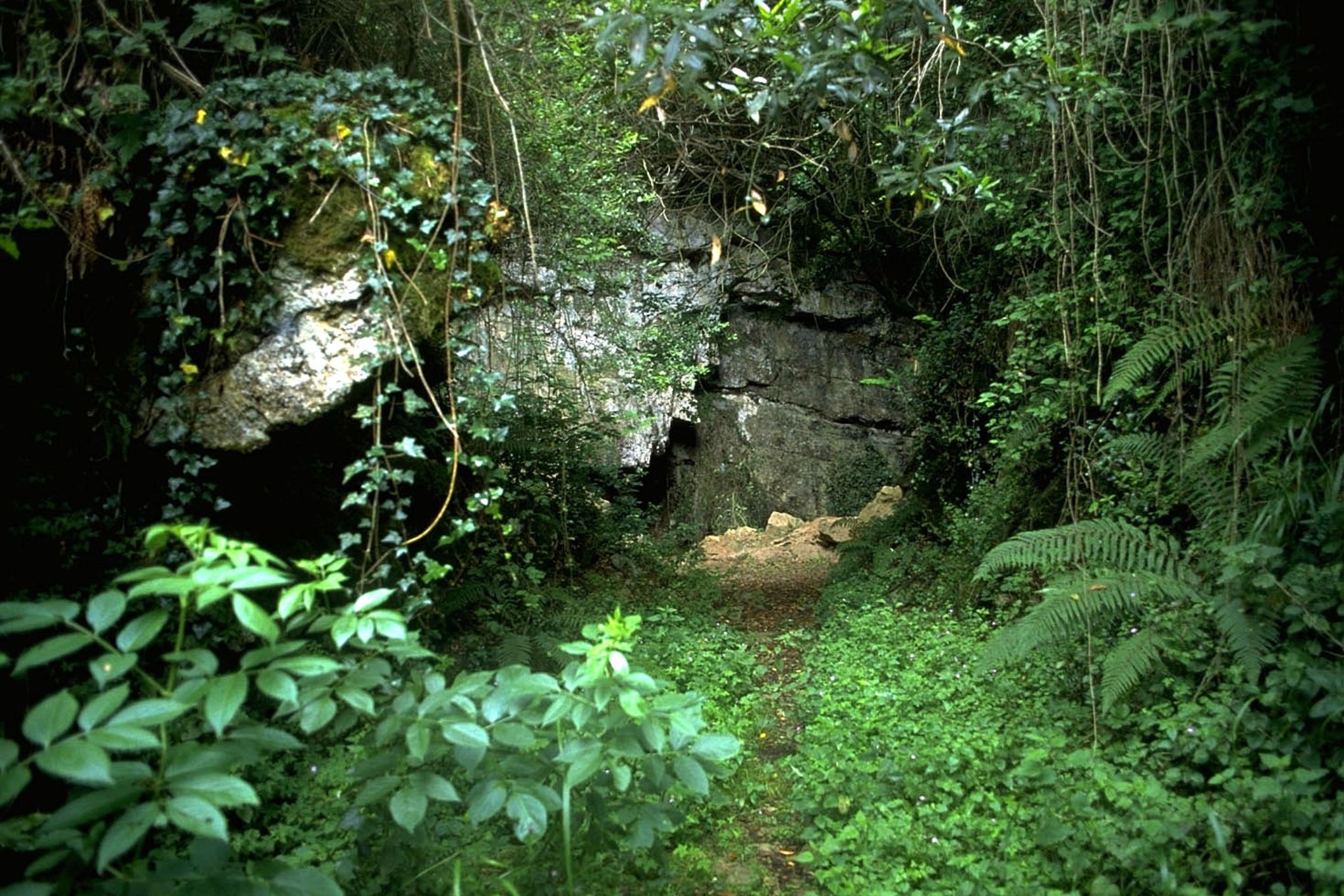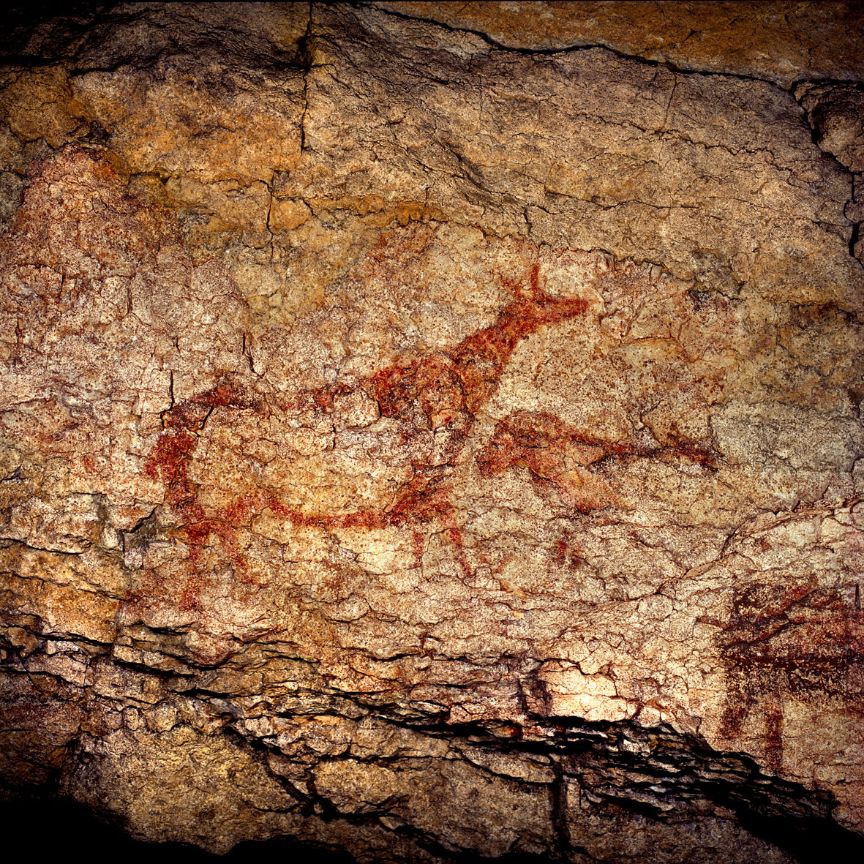El Pendo Cave

Identification of the Property
SubirEscobedo, Camargo, Autonomous Community of Cantabria
Access
On the CA-240 road (which connects the N-611 and the N-623), in the town of Escobedo, take a turning towards El Churi. The cave is sign-posted from here, and is reached along a steep narrow road.
Geographical coordinates
UTM 30T 426230E / 4804520N Z: 7
Description
SubirTopographic description
El Pendo Cave, or San Pantaleón’s Cave, has a large entrance, facing south-east, near the bottom of a large karst depression that is the sink for a stream. A large vestibule slopes into an enormous chamber 80m long, 45m wide and 20m high, which is the location of the archaeological deposit and the main frieze of paintings. The cave ends in a narrow meandering passage containing a group of engravings, and has a total length of 150m.
Date of Discovery
The archaeological deposit was discovered in 1878 by M. Sanz de Sautuola, in the course of his prehistoric explorations in the province of Santander. The engravings were recognised by H. Alcalde del Río in 1907.
The paintings were first identified many years later, in 1997, by Á. Valle, C. González Luque and J.M. Morlote.
 Pulse para ampliar
Pulse para ampliar
Archaeological research
Following its discovery, the thick archaeological deposit inside El Pendo Cave was excavated by numerous researchers at the end of the 19th Century and the early 20th Century: J. Vilanova y Piera, M. Sanz de Sautuola, H. Obermaier, M. Shalcrass, O. Cendrero, etc. In 1907, Alcalde del Río explored the cave and found the engravings. J. Carballo dug the cave during several seasons between 1924 and 1941, and his finds were used to build up the collections at the Provincial Museum of Prehistory and Archaeology.
Between 1953 and 1957, J. Martínez Santaolalla directed an international team of archaeologists who carried out the most extensive excavations in the cave. Lastly, a team directed by R. Montes and J. Sanguino worked at the site between 1994 and 1999, and they were responsible for the discovery of the paintings in 1997. Through all this work, the occupations that have been documented correspond to the Middle and Upper Palaeolithic, Mesolithic, recent Prehistory and the Middle Ages.
Artistic contents: paintings and engravings
The cave art at El Pendo is concentrated into two quite separate groups. The most interesting group is a series of red paintings on a long frieze of wall located at the end of the main chamber. It is within the dark zone of the cave, although the daylight at the entrance can still be seen. Some form of scaffolding must have been used to produce the paintings, especially the ones on the left, at a considerable height above the boulders that here make up the floor of the chamber.
The red pigment was made from ochre, which could have been obtained from natural sources within the cave itself. It was applied to represent some 24 animal figures, using various techniques: as dotted lines, either discontinuous or overlapping, as simple lines, and as colour wash. The frieze is dominated by its central figures: a large hind opposite a horse. Around these are arranged several hinds, two of which are painted in perspective to look as if they are running away from the spectator, and an ibex whose front-quarters were painted while the relief of the rock completes its figure. There are no abstract signs except for a few non-figurative lines.
Further figures, although more poorlypreserved, are found on the wall to the right of the frieze. As a group, these paintings are very homogeneous in style and technique, apparently forming a deliberate composition. They are probably synchronic, and can be assigned to the archaic phase of Palaeolithic art (about 20,000 years B.P.) The narrow passage at the end of the cave has a group of engravings drawn with single fine lines. They represent a rare depiction of a bird and an indeterminate quadruped, and are probably Magdalenian in age.
Bibliography
SubirGONZÁLEZ ECHEGARAY, J. et al. 1980. El yacimiento de la cueva de El Pendo (Excavaciones 1953-57). Madrid: Bibliotheca Praehistorica Hispana 17.
MONTES BARQUÍN, R. 2000. Actuaciones arqueológicas en la cueva de El Pendo (Escobedo de Camargo). En R. Ontañón Peredo (coord.): Actuaciones Arqueológicas en Cantabria 1984-1999: 253-258. Santander: Consejería de Cultura y Deporte del Gobierno de Cantabria.
MONTES BARQUÍN, R. y SANGUINO GONZÁLEZ, J. (dirs.) 2001. La cueva de El Pendo. Actuaciones arqueológicas 1994-2000. Santander: Consejería de Cultura, Turismo y Deporte del Gobierno de Cantabria, Ayuntamiento de Camargo, Parlamento de Cantabria.
ONTAÑÓN PEREDO, R. 2018. 10 Cuevas Patrimonio Mundial en Cantabria. Santander: Consejería de Educación, Cultura y Deporte - Gobierno de Cantabria / Asociación de Amigos del MUPAC.



